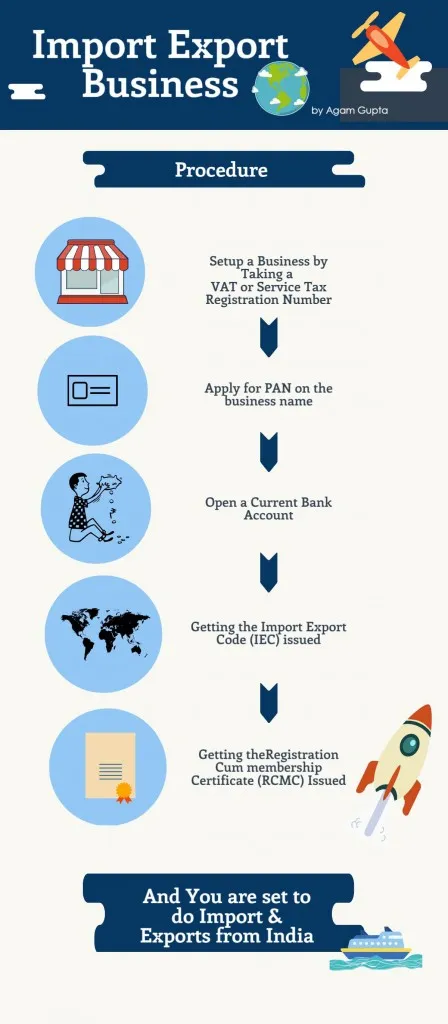Entrepreneurs: Here’s how to start your import export business
In recent times, we have seen a major growth in the export and import of goods and services in India. Seeing this change, more and more entrepreneurs or startups are venturing into this area. But many jump in without weighing the pros and cons and rather than laughing their way to the bank, it turns into a nightmare experience.

Image: Shutterstock
So how do you know if your venture is ready to enter the import/export market? Here are some things you need to have in order.
Getting started
Set up
First and foremost, you must have a business setup. It is recommended you open a sole proprietorship in the initial stage by taking a Service Tax registration or a VAT registration with an attractive name and logo.
Obtain a PAN card for the business
Once you have received the required registration, it is mandatory to have a PAN card issued by the Income Tax Department.
Open a current account
After receiving your business registration and PAN card, you need to open a current bank account with any commercial bank exclusively for your business.
Get the Import Export Code (IEC) issued
This is one of the most important requirements to get your import and export business started. IEC is required in all cases except in case of restricted or prohibited goods or services.
Import Export Code (IEC) registration can be obtained by applying online at the DGFT website.
Documents Required for Import Export Code (IEC):
- Personal PAN card or Company PAN card
- Applicant’s photograph
- Copy of a cancelled cheque from the business’ current account
A PAN card is mandatory to get an IEC code and only one IEC is allotted per PAN card.
Obtaining the Registration cum Membership Certificate (RCMC)
After obtaining the IEC, you need to obtain an RCMC, granted by the concerned Export Promotion Councils to get authorisation to import and export, or for any other benefit.
There are around 26 export promotion councils from where you can get an RCMC issued.
After getting the IEC and RCMC issued, you can set up your import and export business from India. The IEC and RCMC issued is valid for all branches or business premises across India, and it takes only between five and seven days to get all the registrations done.
Opportunities available with exporters
The import and export of goods or services is an integral part of a country’s economy, and a country cannot grow without interacting with other parts of the world. And, as mentioned above, after getting into import and export, there are many avenues one can explore. Some of these as noted below:

- Exploring online marketplacesYou might have heard about Amazon.com, Alibaba.com, Aliexpress.com, DHGate.com, and many more online marketplaces that allow an exporter to enlist as a vendor on their sites and let him or her connect with customers across the globe.
- This time, the internet is acting as a bridge for the exporters to export their product to customers sitting thousands of kilometres away.
- Exploring international marketsAs each country has unique resources that can be exported, it needs to import certain resources. You need to explore what you can export to the needy country and in exchange what you can Import.
For example, if you want to do a trade in agricultural equipment, you can go for Brazil, which is the best in producing agricultural processing equipment. China is famous for electronic equipment, India’s most exported product in 2015 was gems and precious stones, which accounted for 14.7 percent of the total exports
3. Exploring the products opportunities
It does not mean that if you are exporting an Indian-made product to the world, you can’t import a high demand item to India from abroad. There are several product opportunities that one can look into. Here are some of them:
Leather products: India has a held a strong position from years in exporting leather products like wallets, belts, toys, and handbags, and a large number of small and medium-sized companies are already doing this business successfully.Medical appliances: India is now emerging as a major supplier of medical appliances in the world, and because of the quality and reliability, manufacturers are establishing a reputation. Some of the medical appliances exported from India are gloves, gauzes, bandages, face masks, and much more.
Tobacco import: A major part of the revenue for the Government of India comes from the export of tobacco only, and this tobacco also becomes the major part of import of Indian economy.

Conclusion
While coming up with an idea costs nothing, executing and materialising is what will create a lucrative business. Import and export of goods and services will always be an encouraging business, and will always help in opening up new avenues for you and for your country.
(Disclaimer: The views and opinions expressed in this article are those of the author and do not necessarily reflect the views of YourStory.)







